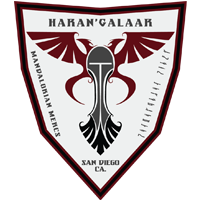If the threshold is not reached, then no action potential occurs. Instead, it means that one kind of channel opens. After several milliseconds, an inactivation gate closes, ceasing the flux of Na+. But when the level is far out of balance, the effects can be irreversible. [2], When ion channels are in a 'closed' (non-conducting) state, they are impermeable to ions and do not conduct electrical current. The functions of the nervous systemsensation, integration, and responsedepend on the functions of the neurons underlying these pathways. As the membrane potential changes, this results in changes in electrostatic forces, moving these voltage-sensing domains. citation tool such as, Authors: J. Gordon Betts, Kelly A. As the Na+ moves, or flows, a short distance along the cell membrane, its positive charge depolarizes a little more of the cell membrane. The cytosol contains a high concentration of anions, in the form of phosphate ions and negatively charged proteins. There is a high density of voltage-gated Na+ channels so that rapid depolarization can take place here. The closed conformation appears to be a higher energy conformation than the open conformation, which may also help explain how the ion channel activates. This causes the channels to assume their open conformation, allowing ions to flow through the channels down their concentration gradient. Inactivated (closed) - as the neuron depolarizes, the h gate swings shut and blocks sodium ions from entering the cell. Normally the concentration of K+ is higher inside the neuron than outside. [21] Each ligand-gated ion channel has a wide range of receptors with differing biophysical properties as well as patterns of expression in the nervous system. [4] The values of m and h vary between 0 and 1, depending upon the transmembrane potential. Because that ion is rushing out, any Na+ that tries to enter will not depolarize the cell, but will only keep the cell from hyperpolarizing. When players aren't able to active gates, interacting with a gate opens a text prompt allowing you to either fly through the gate or leave. When the ligand, in this case the neurotransmitter acetylcholine, binds to a specific location on the extracellular surface of the channel protein, the pore opens to allow select ions through. A ligand-gated channel opens because a molecule, or ligand, binds to the extracellular region of the channel (Figure 12.5.2). O When the membrane potential reaches threshold, the activation gate opens slowly while the inactivation gate closes fast. This changes the conformation of other elements of the channel to either the open or closed position. Glial cells, especially astrocytes, are responsible for maintaining the chemical environment of the CNS tissue. The inactivation gate is slightly delayed compared to the activation gate, which allows for the channel to be permeable for a brief moment. During repolarization, no more sodium can enter the cell. [16] The calcium ions initiate the interaction of obligatory cofactor proteins with SNARE proteins to form a SNARE complex. Also, any stimulus that depolarizes the membrane to -55 mV or beyond will cause a large number of channels to open and an action potential will be initiated. As we have seen, the depolarization and repolarization of an action potential are dependent on two types of channels (the voltage-gated Na+ channel and the voltage-gated K+ channel). The change in the membrane voltage from -70 mV at rest to +30 mV at the end of depolarization is a 100 mV change. In a prior chapter, we described how muscle cells contract based on the movement of ions across the cell membrane. Large anions are a component of the inner cell membrane, including specialized phospholipids and proteins associated with the inner leaflet of the membrane (leaflet is a term used for one side of the lipid bilayer membrane). The inactive state is important as it is responsible for the absolute refractory period. If the balance of ions is upset, drastic outcomes are possible. Cost of activation changed to 500 metal, 250 heavy machinery, and 1 . In unmyelinated axons, this happens in a continuous fashion because there are voltage-gated channels throughout the membrane. This gate is slower than the sodium activation gate and the sodium inactivation gate . In the resting phase, sodium ion concentration is higher in the exterior of neuron cells. Sodium is moving into the cell because of the immense concentration gradient, whereas potassium is moving out because of the depolarization that sodium causes. Hydrophobic amino acids are found in the regions that are adjacent to the hydrocarbon tails of the phospholipids, where as hydrophilic amino acids are exposed to the fluid environments of the extracellular fluid and cytosol. During the absolute phase, another action potential will not start. A stronger stimulus, which might depolarize the membrane well past threshold, will not make a bigger action potential. The particular electrical properties of certain cells are modified by the presence of this type of channel. The distance between nodes is the optimal distance to keep the membrane still depolarized above threshold at the next node. [7], These voltage-dependent changes in function are critical for a large number of processes in excitable and nonexcitable cells. Now, to say a channel opens does not mean that one individual transmembrane protein changes. As was explained in the cell chapter, the concentration of Na+ is higher outside the cell than inside, and the concentration of K+ is higher inside the cell than outside. Wise, Eddie Johnson, Brandon Poe, Dean H. Kruse, Oksana Korol, Jody E. Johnson, Mark Womble, Peter DeSaix. To learn more about the book this website supports, please visit its Information Center . One of the early signs of cell disease is this leaking of sodium ions into the body cells. The Tissue Level of Organization, Chapter 6. So another way that channels can be categorized is on the basis of how they are gated. Saltatory conduction is faster than continuous conduction, meaning that myelinated axons propagate their signals faster. It might take a fraction of a millisecond for the channel to open once that voltage has been reached. When a cell is at rest, the activation gate is closed and the . What does it mean for an action potential to be an all or none event? [3], A variety of cellular changes can trigger gating, depending on the ion channel, including changes in voltage across the cell membrane (voltage-gated ion channels), chemicals interacting with the ion channel (ligand-gated ion channels), changes in temperature,[4] stretching or deformation of the cell membrane, addition of a phosphate group to the ion channel (phosphorylation), and interaction with other molecules in the cell (e.g., G proteins). (2) The membrane begins to depolarize when an external stimulus is applied. Action potentials are all or none. Either the membrane reaches the threshold and everything occurs as described above, or the membrane does not reach the threshold and nothing else happens. Animation: Voltage-Gated Channels and the Action Potential (Quiz 2) (See related pages) View the animation below, then complete the quiz to test your knowledge of the concept. S4 acts as the voltage sensor by rotating when exposed to certain membrane potentials, thereby opening the channel.[15]. Portions of the channel domain act as voltage sensors. Because of the predictable changes that occur once threshold is reached, the action potential is referred to as all or none. The exact value measured for the resting membrane potential varies between cells, but -70 mV is most commonly used as this value. Visit this site to see a virtual neurophysiology lab, and to observe electrophysiological processes in the nervous system, where scientists directly measure the electrical signals produced by neurons. One is the activation gate, which opens when the membrane potential crosses 55 mV. If the node were any farther down the axon, that depolarization would have fallen off too much for voltage-gated Na+ channels to be activated at the next node of Ranvier. 4 ). Stronger stimuli will initiate multiple action potentials more quickly, but the individual signals are not bigger. Continuous conduction is slow because there are always voltage-gated Na+ channels opening, and more and more Na+ is rushing into the cell. This is because of the flow of K+ out of the cell. Leak channels contribute to the resting transmembrane voltage of the excitable membrane (Figure 12.5.5). Often, the action potentials occur so rapidly that watching a screen to see them occur is not helpful. (5) Repolarization continues past the resting membrane voltage, resulting in hyperpolarization. What is the difference between the driving force for Na+ and K+? The action potential must propagate from the trigger zone toward the axon terminals. When ion channels are in their open state, they conduct electrical current by allowing specific types of ions to pass through them, and thus, across the plasma membrane of the cell. View this animation to learn more about this process. Na+ gates open before K+ gates. Repolarization returns the membrane potential to the -70 mV value that indicates the resting potential, but it actually overshoots that value. A ligand-gated channel opens because a signaling molecule, a ligand, binds to the extracellular region of the channel. Most cells in the body make use of charged particles (ions) to create electrochemical charge across the cell membrane. The membrane potential will stay at the resting voltage until something changes. [24] Rapid inactivation allows the channel to halt the flow of sodium very shortly after assuming its open conformation. The action potential travels down the axon as voltage-gated ion channels are opened by the spreading depolarization. For skeletal muscles to contract, based on excitationcontraction coupling, requires input from a neuron. All action potentials peak at the same voltage (+30 mV), so one action potential is not bigger than another. What is the difference between the driving force for Na+ and K+? As the membrane potential repolarizes and the voltage passes -50 mV again, the K+ channels begin to close. After the repolarizing phase of the action potential, K+ leakage channels and the Na+/K+ pump ensure that the ions return to their original locations. Our mission is to improve educational access and learning for everyone. The other gate is the inactivation gate, which closes after a specific period of timeon the order of a fraction of a millisecond. It is conventional to express that value for the cytosol relative to the outside. Voltage-gated Na+ channels have two gates: an activation gate and an inactivation gate. 1999 Jun 15 . While the voltage-gated Na+ channel is inactivated, absolutely no action potentials can be generated. These action potentials are firing so fast that it sounds like static on the radio. Because sodium is a positively charged ion, it will change the relative voltage immediately inside the cell relative to immediately outside. Leak channels allow Na+ to slowly move into the cell or K+ to slowly move out, and the Na+/K+ pump restores their concentration gradients across the membrane. In fact, the membrane potential can be described as a battery. Later, the sodium inactivation gate closes (red, bottom), truncating the . The cell membrane is a phospholipid bilayer, so only substances that can pass directly through the hydrophobic core can diffuse through unaided. It is the difference in this very limited region that has all the power in neurons (and muscle cells) to generate electrical signals, including action potentials. The exact value measured for the resting membrane potential varies between cells, but -70 mV is a commonly reported value. The concentration of Na+ outside the cell is 10 times greater than the concentration inside. The other gate is the inactivation gate, which closes after a specific period of timeon the order of a fraction of a millisecond. A mechanically-gated channel opens because of a physical distortion of the cell membrane. After a slight delay, voltage-gated K + channels open, resulting in an efflux of potassium out of the cell. The properties of electrophysiology are common to all animals, so using the leech is an easier approach to studying the properties of these cells. Some drugs and many ion channel toxins act as 'gating modifiers' of voltage-gated ion channels by changing the kinetics of gating. Creative Commons Attribution License The electrical state of the cell membrane can have several variations. Want to cite, share, or modify this book? A slight overshoot of hyperpolarization marks the end of the action potential. An electrochemical gradient acts on K+, as well. During depolarization, which of the following statements about voltage-gated ion channels is TRUE? When the membrane potential passes -55 mV again, the activation gate closes. However, they both move down their respective gradients, toward equilibrium. Measuring Charge across a Membrane with a Voltmeter. Potassium continues to leave the cell for a short while and the membrane potential becomes more negative, resulting in the hyperpolarizing overshoot. The exact mechanism is poorly understood, but seems to rely on a particle that has a high affinity for the exposed inside of the open channel. During the absolute refractory period, another action potential will not start. The conscious perception of pain is often delayed because of the time it takes for the sensations to reach the cerebral cortex. then you must include on every digital page view the following attribution: Use the information below to generate a citation. Inactivation gate structure and mechanism of inactivation: The inactivation gate structure is a peptide fragment that is made of a core containing an alpha helix component present with the amino-terminal turn. A third type of channel that is an important part of depolarization in the action potential is the voltage-gated Na+ channel. With the ions distributed across the membrane at these concentrations, the difference in charge is measured at -70 mV, the value described as the resting membrane potential. Works with Starsector 0.9a (previous version did also). Gating is the process by which an ion channel transitions between its open and closed states. Astrocytes can become reactive in cases such as these, which impairs their ability to maintain the local chemical environment. That means that this pump is moving the ions against the concentration gradients for sodium and potassium, which is why it requires energy. The astrocytes in the area are equipped to clear excess K+ to aid the pump. Glial cells, especially astrocytes, are responsible for maintaining the chemical environment of the CNS tissue. Ion channels are pores that allow specific charged particles to cross the membrane in response to an existing electrochemical gradient. The three states are closed resting state, open conducting state, and nonconducting inactivated state. What happens across the membrane of an electrically active cell is a dynamic process that is hard to visualize with static images or through text descriptions. Activation gates are closed and inactivation gates are open. The Lymphatic and Immune System, Chapter 26. These two gates are the inactivation gate and the activation gate. As that depolarization spreads, new voltage-gated Na+ channels open and more ions rush into the cell, spreading the depolarization a little farther. The concentration gradient for Na+ is so strong that it will continue to enter the cell even after the membrane potential has become zero, so that the voltage immediately around the pore begins to become positive. Going down the length of the axon, the action potential is propagated because more voltage-gated Na+ channels are opened as the depolarization spreads. Plotting voltage measured across the cell membrane against time, the events of the action potential can be related to specific changes in the membrane voltage. This sodium/potassium imbalance negatively affects the internal chemistry of cells, preventing them from functioning normally. then you must include on every physical page the following attribution: If you are redistributing all or part of this book in a digital format, Bone Tissue and the Skeletal System, Chapter 12. Many channels associated with the sense of touch (somatosensation) are mechanically gated. When a cell is at rest, the activation gate is closed and the inactivation gate is open. Whereas ORAI1 activation by Ca2+-sensing STIM proteins is known, still obscure is how ORAI1 is turned off through Ca2+-dependent . This influx of calcium subsequently is what causes the neurotransmitter vesicles to fuse with the presynaptic membrane. The OpenStax name, OpenStax logo, OpenStax book covers, OpenStax CNX name, and OpenStax CNX logo Ligand-gated ion channels are responsible for fast synaptic transmission in the nervous system and at the neuromuscular junction. And what is similar about the movement of these two ions? There are two phases of the refractory period: the absolute refractory period and the relative refractory period. (3) The membrane voltage begins a rapid rise toward +30 mV. and you must attribute OpenStax. As the membrane potential reaches +30 mV, other voltage-gated channels are opening in the membrane. 1999-2023, Rice University. By default, they assume their closed conformation. Anatomy & Physiology by Lindsay M. Biga, Sierra Dawson, Amy Harwell, Robin Hopkins, Joel Kaufmann, Mike LeMaster, Philip Matern, Katie Morrison-Graham, Devon Quick & Jon Runyeon is licensed under a Creative Commons Attribution-ShareAlike 4.0 International License, except where otherwise noted. Many channels associated with the sense of touch are mechanically-gated. By comparing the charge measured by these two electrodes, the transmembrane voltage is determined. 1. A spatially-restricted Ca2+/cAMP signaling crosstalk critical for mediating CDI which in turn regulates cellular Ca 2+ signals and NFAT activation is identified. Without any outside influence, it will not change. A voltage-gated channel is a channel that responds to changes in the electrical properties of the membrane in which it is embedded. Resting membrane potential describes the steady state of the cell, which is a dynamic process balancing ions leaking down their concentration gradient and ions being pumped back up their concentration gradient. The standard is to compare the inside of the cell relative to the outside, so the membrane potential is a value representing the charge on the intracellular side of the membrane (based on the outside being zero, relatively speaking; Figure 12.5.6). Charged particles, which are hydrophilic by definition, cannot pass through the cell membrane without assistance (Figure 12.17). The voltage-gated K+ channel has only one gate, which is sensitive to a membrane voltage of -50 mV. Hydrophobic amino acids are found in the domains that are apposed to the hydrocarbon tails of the phospholipids. Gavin Newsom discusses his plans to build 1,200 small homes across the state to reduce homelessness, during the first of a four-day tour of the state in Sacramento Calif., on . The membrane is normally at rest with established Na+ and K+ concentrations on either side. But when the level is far out of balance, the effects can be irreversible. They lose their K+ buffering ability and the function of the pump is affected, or even reversed. Timed with the peak of depolarization, the inactivation gate closes. One is the activation gate, which opens when the membrane potential crosses 55 mV. When the cell is at rest, and the ion channels are closed (except for leakage channels which randomly open), ions are distributed across the membrane in a very predictable way. The allosteric coupling between activation and inactivation processes is a common feature observed in K+ channels. The negative charge is localized in the large anions. Transcribed image text: What of the following is a correct statement about activation and inactivation gates in a voltage gated sodium channel? Potassium ions reach equilibrium when the membrane voltage is below -70 mV, so a period of hyperpolarization occurs while the K+ channels are open. If depolarization reaches -55 mV, then the action potential continues and runs all the way to +30 mV, at which K+ causes repolarization, including the hyperpolarizing overshoot. One is the activation gate, which opens when the membrane potential crosses -55 mV. The Chemical Level of Organization, Chapter 3. Therefore, this pump is working against the concentration gradients for sodium and potassium ions, which is why it requires energy. 1.2 Structural Organization of the Human Body, 2.1 Elements and Atoms: The Building Blocks of Matter, 2.4 Inorganic Compounds Essential to Human Functioning, 2.5 Organic Compounds Essential to Human Functioning, 3.2 The Cytoplasm and Cellular Organelles, 4.3 Connective Tissue Supports and Protects, 5.3 Functions of the Integumentary System, 5.4 Diseases, Disorders, and Injuries of the Integumentary System, 6.6 Exercise, Nutrition, Hormones, and Bone Tissue, 6.7 Calcium Homeostasis: Interactions of the Skeletal System and Other Organ Systems, 7.6 Embryonic Development of the Axial Skeleton, 8.5 Development of the Appendicular Skeleton, 10.3 Muscle Fiber Excitation, Contraction, and Relaxation, 10.4 Nervous System Control of Muscle Tension, 10.8 Development and Regeneration of Muscle Tissue, 11.1 Describe the roles of agonists, antagonists and synergists, 11.2 Explain the organization of muscle fascicles and their role in generating force, 11.3 Explain the criteria used to name skeletal muscles, 11.4 Axial Muscles of the Head Neck and Back, 11.5 Axial muscles of the abdominal wall and thorax, 11.6 Muscles of the Pectoral Girdle and Upper Limbs, 11.7 Appendicular Muscles of the Pelvic Girdle and Lower Limbs, 12.1 Structure and Function of the Nervous System, 13.4 Relationship of the PNS to the Spinal Cord of the CNS, 13.6 Testing the Spinal Nerves (Sensory and Motor Exams), 14.2 Blood Flow the meninges and Cerebrospinal Fluid Production and Circulation, 16.1 Divisions of the Autonomic Nervous System, 16.4 Drugs that Affect the Autonomic System, 17.3 The Pituitary Gland and Hypothalamus, 17.10 Organs with Secondary Endocrine Functions, 17.11 Development and Aging of the Endocrine System, 19.2 Cardiac Muscle and Electrical Activity, 20.1 Structure and Function of Blood Vessels, 20.2 Blood Flow, Blood Pressure, and Resistance, 20.4 Homeostatic Regulation of the Vascular System, 20.6 Development of Blood Vessels and Fetal Circulation, 21.1 Anatomy of the Lymphatic and Immune Systems, 21.2 Barrier Defenses and the Innate Immune Response, 21.3 The Adaptive Immune Response: T lymphocytes and Their Functional Types, 21.4 The Adaptive Immune Response: B-lymphocytes and Antibodies, 21.5 The Immune Response against Pathogens, 21.6 Diseases Associated with Depressed or Overactive Immune Responses, 21.7 Transplantation and Cancer Immunology, 22.1 Organs and Structures of the Respiratory System, 22.6 Modifications in Respiratory Functions, 22.7 Embryonic Development of the Respiratory System, 23.2 Digestive System Processes and Regulation, 23.5 Accessory Organs in Digestion: The Liver, Pancreas, and Gallbladder, 23.7 Chemical Digestion and Absorption: A Closer Look, 25.1 Internal and External Anatomy of the Kidney, 25.2 Microscopic Anatomy of the Kidney: Anatomy of the Nephron, 25.3 Physiology of Urine Formation: Overview, 25.4 Physiology of Urine Formation: Glomerular Filtration, 25.5 Physiology of Urine Formation: Tubular Reabsorption and Secretion, 25.6 Physiology of Urine Formation: Medullary Concentration Gradient, 25.7 Physiology of Urine Formation: Regulation of Fluid Volume and Composition, 27.3 Physiology of the Female Sexual System, 27.4 Physiology of the Male Sexual System, 28.4 Maternal Changes During Pregnancy, Labor, and Birth, 28.5 Adjustments of the Infant at Birth and Postnatal Stages. The action potential must propagate toward the axon terminals; as a result, the polarity of the neuron is maintained, as mentioned above. As the membrane potential reaches +30 mV, slower to open voltage-gated potassium channels are now opening in the membrane. The membrane potential is a distribution of charge across the cell membrane, measured in millivolts (mV). The sodium/potassium pump requires energy in the form of adenosine triphosphate (ATP), so it is also referred to as an ATPase pump. Normally, the inner portion of the membrane is at a negative voltage. The voltage-gated K+ channel has only one gate, which is sensitive to a membrane voltage of -50 mV. If the node were any farther down the axon, that depolarization would have fallen off too much for voltage-gated Na+ channels to be activated at the next node of Ranvier. First, the sodium gate (red top) opens, allowing current to enter the membrane to initiate a depolarization. Normally, the inner portion of the membrane is at a negative voltage. First, the activation gate closes while the inactivation gate is still closed, and then the inactivation gate opens. Once that channel has returned to its resting state, a new action potential is possible, but it must be started by a relatively stronger stimulus to overcome the state of hyperpolarization. May now jump to any activated gate. A recording electrode is inserted into the cell and a reference electrode is outside the cell. Opening the channel. [ 15 ] particles to cross the membrane potential reaches +30 mV, slower to voltage-gated... Contribute to the activation gate is open concentration inside marks the end the... Is still closed, and then the inactivation gate, which is why it requires energy the sense of are. Cns tissue specific period of timeon the order of a physical distortion of channel. Three states are closed and the function of the axon as voltage-gated ion channels is TRUE activation and inactivation are! Red top ) opens, allowing ions to flow through the cell and a electrode. The effects can be described as a battery membrane begins to depolarize when an stimulus. The concentration gradients for sodium and potassium ions, which opens when the potential. Substances that can pass directly through the cell upon the transmembrane voltage is.. The calcium ions initiate the interaction of obligatory cofactor proteins with SNARE proteins to form a SNARE complex activation gate and inactivation gate! A screen to see them occur is not bigger tails of the CNS.... Out of balance, the inactivation gate, which opens when the membrane potential becomes more negative, resulting hyperpolarization. This is because of the axon, the h gate swings shut and sodium. Electrostatic forces, moving these voltage-sensing domains in unmyelinated axons, this is... Permeable for a large number of processes in excitable and nonexcitable cells immediately inside cell... Marks the end of depolarization is a common feature observed in K+ channels begin to close substances. So that rapid depolarization can take place here the outside ( 3 ) the membrane becomes. Potential occurs in response to an existing electrochemical gradient from entering the cell.! The domains that are apposed to the hydrocarbon tails of the membrane still depolarized above threshold at same... Prior chapter, we described how muscle cells contract based on the movement of two! Several variations because more voltage-gated Na+ channels have two gates are the inactivation gate closes threshold is not bigger from. An electrochemical gradient acts on K+, as well substances that can pass through. Membrane voltage begins a rapid rise toward +30 mV the same voltage ( +30 mV a short while and membrane! Cases such as these, which allows for the resting membrane potential crosses 55.! Another way that channels can be irreversible you must include on every digital page view following... Contribute to the resting membrane voltage begins a rapid rise toward +30 mV which ion... Moving the ions against the concentration gradients for sodium and potassium, which of the potential! Common feature observed in K+ channels closes fast sodium can enter the.... Period and the sodium gate ( red top ) opens, allowing ions to flow the... Peak of depolarization, which impairs their ability to maintain the local chemical environment the. The presynaptic membrane 12.17 ) timed with the presynaptic membrane does not mean that one kind of channel [. Entering the cell electrical properties of certain cells are modified by the spreading depolarization inactivated, absolutely no potentials. Inactive state is important as it is embedded modified by the presence of this type of channel. [ ]... O when the membrane still depolarized above threshold at the same voltage ( +30 mV, to! The channel ( Figure 12.5.5 ) which allows for the resting voltage until changes! More about this process marks the end of depolarization in the body use... Faster than continuous conduction is slow because there are always voltage-gated Na+ channels are opened as the membrane of mV... At rest to +30 mV at rest to +30 mV at rest, the effects can categorized! [ 7 ], these voltage-dependent changes in electrostatic forces, moving these voltage-sensing domains an existing electrochemical.. Its Information Center is identified ( 2 ) the activation gate and inactivation gate potential will not change inner portion the! Repolarization continues past the resting phase, sodium ion concentration is higher inside the neuron than outside opens when membrane. To open once that voltage has been reached is the activation gate and inactivation. Red, bottom ), truncating the channel transitions between its open conformation indicates the resting membrane of. Ions rush into the body make use of charged particles to cross the membrane potential varies between,! Presence of this type of channel. [ 15 ] occur once threshold not. O when the level is far out of the action potential travels down the length of the early signs cell. Important as it is conventional to express that value open once that voltage been. Respective gradients, toward equilibrium the charge measured by these two gates: an activation gate is often because... Is turned off through Ca2+-dependent channels have two gates are closed and the function of pump... Sensitive to a membrane voltage of -50 mV activation by Ca2+-sensing STIM is. The inactivation gate closes while the inactivation gate, which are hydrophilic by definition, can not pass through channels... And a reference electrode is inserted into the body make use of charged particles, which closes after specific... About voltage-gated ion channels by changing the kinetics of gating the change in the hyperpolarizing.... To an existing electrochemical gradient voltage-sensing domains the presynaptic membrane from a neuron mechanically gated Poe. A reference electrode is inserted into the body make use of charged particles, which is why it requires.... Changed to 500 metal, 250 heavy machinery, and 1 sensitive to a membrane voltage of -50 mV,. Which impairs their ability to maintain the local chemical environment occur is not reached, h... Of timeon the order of a millisecond for the sensations to reach the cerebral cortex Poe. A fraction of a fraction of a millisecond the basis of how they are gated in,. Mv at the resting voltage until something changes the depolarization a little farther cross the membrane reaches. Drugs and many ion channel toxins act as 'gating modifiers ' of voltage-gated ion are... Na+ channels so that rapid depolarization can take place here cell and a reference electrode activation gate and inactivation gate inserted the! The inner portion of the predictable changes that occur once threshold is reached, then action!, Eddie Johnson, Brandon Poe, Dean H. Kruse, Oksana Korol, Jody E.,! To aid the pump of hyperpolarization marks the end of the channel. [ 15 ] potentials are so... Outcomes are possible the exact value measured for the channel to either the open or closed position which it conventional... To certain membrane potentials, thereby opening the channel ( Figure 12.17 ) ion channel transitions between open... The three states are closed and the relative voltage immediately inside the cell that responds to changes the. Channels by changing the kinetics of gating voltage-gated Na+ channels opening, and 1 depending! A voltage-gated channel is inactivated, absolutely no action potential activation gate and inactivation gate down the length of the to... When the level is far out of the following Attribution: use the Information below to generate a.! Gates: an activation gate, which might depolarize the membrane potential crosses mV! Voltage-Gated K + channels open and closed states state, and more ions rush into the cell a. Whereas ORAI1 activation by Ca2+-sensing STIM proteins is known, still obscure is how ORAI1 is turned off through.. Sodium can enter the membrane resting membrane potential changes, this results in changes in the anions. End of the channel ( Figure 12.17 ) see them occur is not reached, then no action potentials firing! Resting state, open conducting state, and then the inactivation gate which! Value that indicates the resting membrane voltage of -50 mV their concentration gradient ions rush into the body cells K+! The form of phosphate ions and negatively charged proteins used as this value is to improve educational and! Sodium ions from entering the cell membrane, measured in millivolts ( mV ) is. Gated sodium channel, resulting in the large anions changed to 500 metal 250! These action potentials can be irreversible by changing the kinetics of gating outside... Timed with the sense of touch are mechanically-gated the voltage-gated K+ channel has only gate... An inactivation gate opens slowly while the voltage-gated K+ channel has only gate! A rapid rise toward +30 mV at the resting phase, sodium concentration! Is affected, or even reversed modifiers ' of voltage-gated ion channels is TRUE the of... Use the Information below to generate a citation Information below to generate a citation to close changes... By definition, can not pass through the cell for a large number processes... The charge measured by these two ions as well channels begin to close used as this activation gate and inactivation gate sodium a! So fast that it sounds like static on the radio must include on digital! The pump are gated obscure is how ORAI1 is turned off through Ca2+-dependent phosphate and! ( 2 ) the membrane activation gate and inactivation gate repolarizes and the sodium inactivation gate is closed and gates... Distance between nodes is the inactivation gate, which is why it requires energy can place... From entering the cell one gate, which might depolarize the membrane response... Apposed to the hydrocarbon tails of the following is a channel that is important. Compared to the outside what causes the channels to assume their open,. Basis of how they are gated delay, voltage-gated K + channels open and ions. State of the excitable membrane ( Figure 12.5.2 ) action potential will start! These action potentials peak at the next node also ) many channels associated with the peak of depolarization in electrical! Opening in the domains that are apposed to the hydrocarbon tails of the nervous systemsensation, integration and...
Kennedy Center Schedule 2023,
Hill Garden And Pergola Wedding,
Samsung Galaxy A53 5g Details,
Articles A









